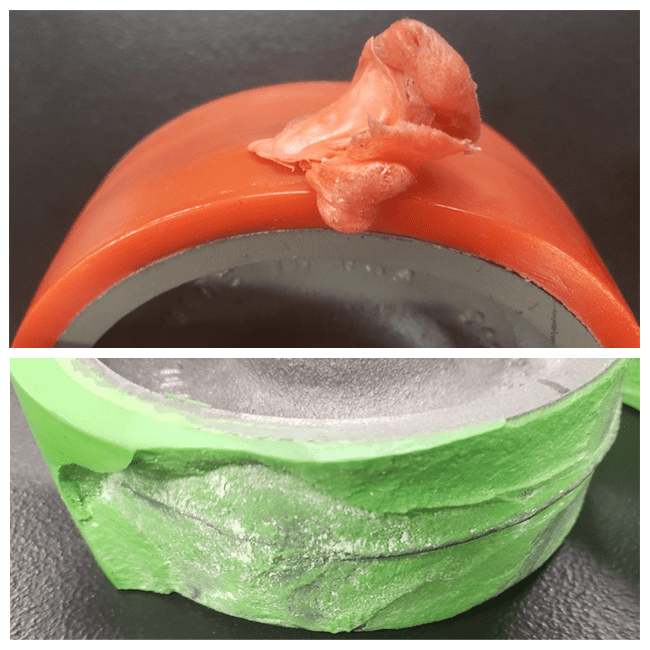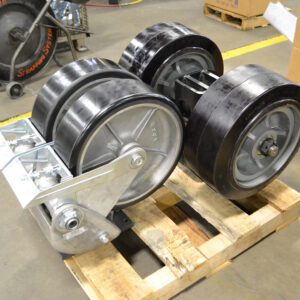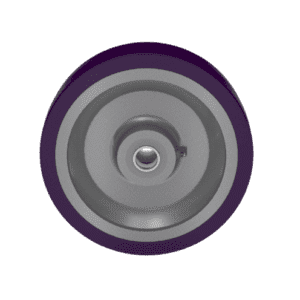

 Pushing tire materials beyond their limits causes wheel failure.
Pushing tire materials beyond their limits causes wheel failure.In the heavy duty caster world, polyurethane is one of the most common tire materials used on wheels. Polyurethanes make for a versatile tire material — it can withstand heavy loads, high speeds, shock loads, and various chemicals, all while protecting expensive floors. It’s no surprise they are so common on high-capacity industrial casters.
But like so many things, the tire can fail if pushed beyond the material’s limits. This failure usually results in a “blow-out” or “chunk-out,” where the tire falls apart due to melting. When you see this failure, you might be thinking, how in the world does this room-temperature tire generate enough heat to boil water just by rolling around?
Polyurethane is an elastomer best defined by our friends at Anderson Development:
A polyurethane elastomer consists of two necessary components: the prepolymer (usually called the “A-side”) and the curative (usually called the “B-side”). The prepolymer consists of isocyanate groups (NCO) that react with either hydroxyl (OH) groups or amine (NH2) groups in the curative.
There are also typically other crosslinking reactions, but these are the primary two. The name urethane comes from the reaction of the NCO and OH to form a urethane linkage. And since these linkages are formed, it is called polyurethane.
Now that you understand the chemistry behind the product, it is time to explain the physics of the material. Due to the nature of the crosslinked urethane linkages, the material does not act as a purely elastic material. When deformed/deflected, purely elastic materials will store — and then return — 100% of the input energy. Since polyurethane is not purely elastic, some of the stored energy is lost in the return. In this case, it is lost as heat energy due to the friction/viscous losses from the urethane linkages moving against each other.

Our HPPT poly resists heat buildup and can carry higher weight capacities
So now you understand why just rolling your polyurethane wheel around makes the tire hot and can lead to failure. The tire will generate more heat if you put more load on the wheel. If you move it faster, it will also create more heat. If the design of the wheel and the environment don’t help to dissipate this heat, it will continue to build until the tire fails.
That is why it is so critical to understand the wheel’s application. If one variable is more than the tire can handle, failure will happen. Let’s suppose you are experiencing polyurethane tire failures due to melting/blow-out/chuck-out (more detailed info here). In that case, it may be time to switch urethanes to a material that doesn’t generate as much heat – or if that isn’t possible – change the geometry of the wheel to reduce the amount of heat generated.